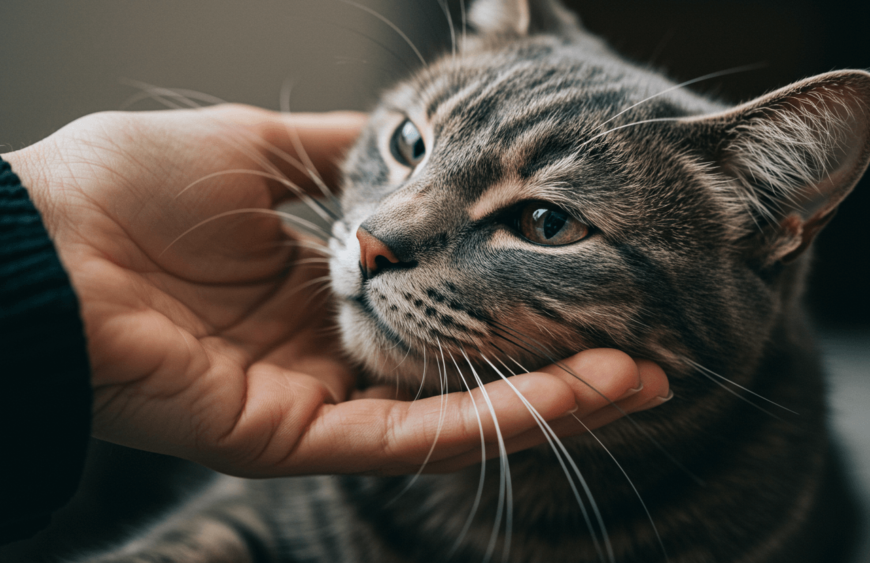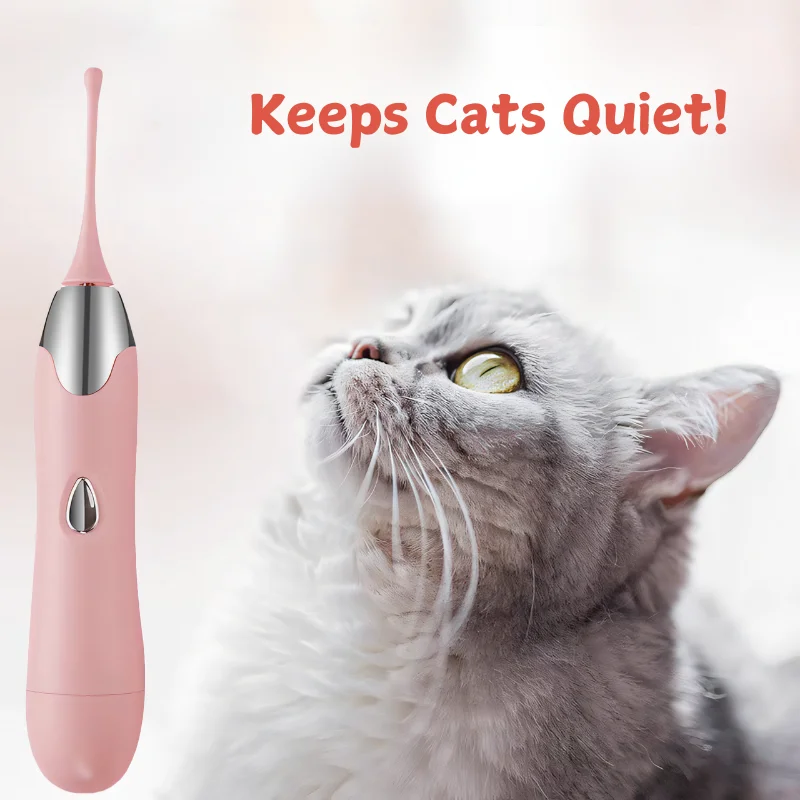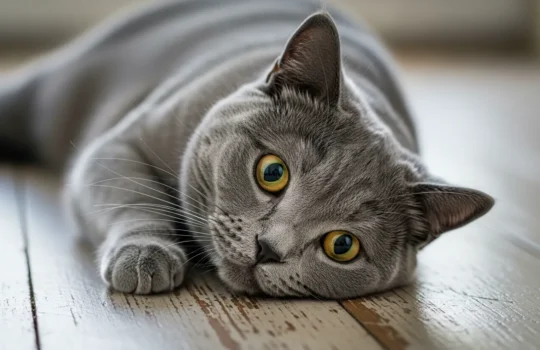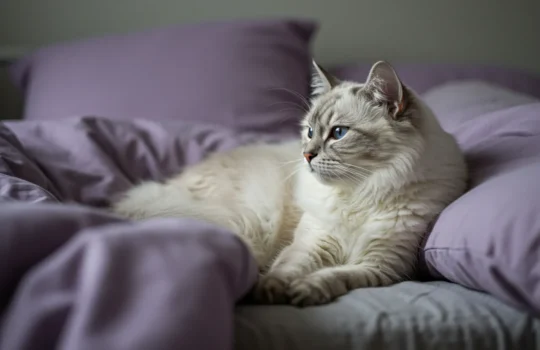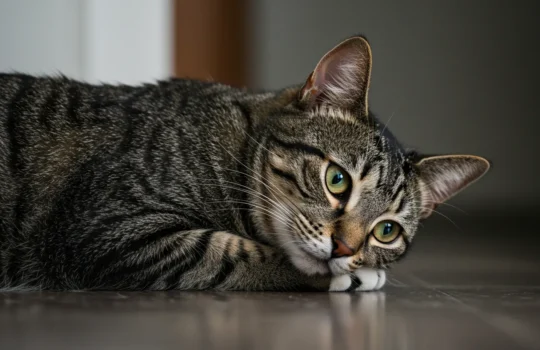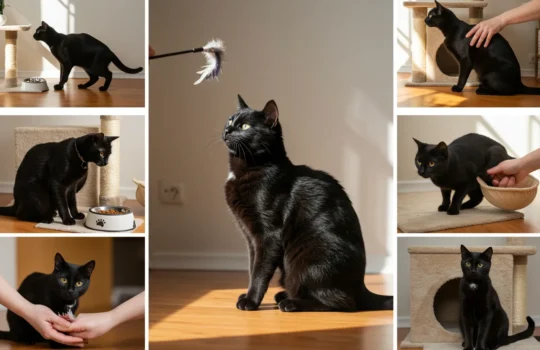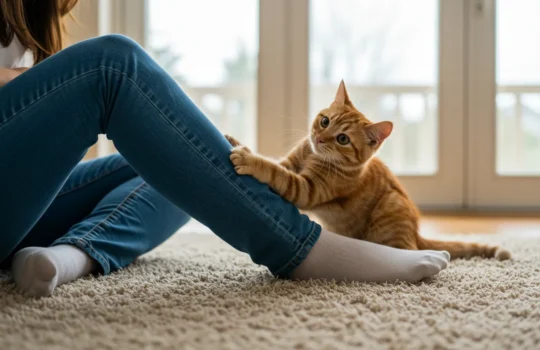Anxiety in cats is a genuine concern with significant emotional and physical ramifications. Anxious felines may exhibit undesirable behaviors such as inappropriate urination or vomiting. Understanding the causes, symptoms, and management strategies of cat anxiety is vital for ensuring your feline companion’s well-being. Early intervention is critical, as anxiety can escalate over time, significantly impacting their quality of life. This guide provides expert advice on how to relieve cat anxiety and improve your cat’s overall well-being.
I. What is Cat Anxiety?
Anxiety in cats is the anticipation of a potential danger or threat, resulting in a physical response. This anxiety can develop following a traumatic event or in response to specific stimuli. Common triggers often involve changes in the cat’s environment. The onset of anxiety is frequently noticed between 5 months and 1 year of age but can occur at any stage of a cat’s life.
Physical reactions may include:
- Increased heart and respiratory rates
- Panting
- Trembling
- Excessive salivation
Behavioral changes include:
- Increased movement
- Hiding
- Destruction
- Excessive vocalization
II. Recognizing the Symptoms of Cat Anxiety
Changes in behavior are the primary indicator of cat anxiety. Here’s what to look for:
- Excessive grooming: This can lead to hair loss, especially on the belly and inner thighs.
- Urinating outside the litter box: This might be a sign of stress or a medical issue, so it’s essential to consult with a vet.
- Aggression/territorial behavior: Anxious cats may become more aggressive towards other pets or humans.
- Hiding/trying to escape or conversely, staying completely still: These are both signs of heightened anxiety and fear.
- Trembling: This is a clear physical manifestation of fear and anxiety.
- Pacing/restlessness: An anxious cat might exhibit repetitive pacing or an inability to settle down.
- Decreased appetite: Stress can often lead to a loss of interest in food.
- Increased vocalization: Excessive meowing, hissing, or growling can indicate distress.
- Physical signs: Observe your cat’s posture. Is their tail tucked? Are their ears back? Is their hair standing up? These are all signs of anxiety.
Severity Levels of Anxiety:
Mild:
- Avoiding eye contact
- Shifting body or head away
- Holding their tail close to their body
- Slight tail flicking
- Partially dilated pupils
Moderate:
- Ears partially to the side
- Increased dilation of the pupils
- Increased respiratory rate
- Looking at the stimulus
- Holding their tail tight against their body
- Crouching and leaning away
Severe:
- Trying to escape or completely freezing in place
- Fully dilated pupils
- Holding their ears back
- Hair standing up
- Staring
- Aggression
Importantly, anxiety can trigger or exacerbate medical conditions like Feline Lower Urinary Tract Disease (FLUTD) and Upper Respiratory Infections (URIs). Recurrent medical issues may indicate underlying anxiety.
III. Understanding the Causes of Cat Anxiety
Identifying the specific triggers is crucial for effectively mitigating the effects of anxiety. Common causes of cat anxiety include:
- Environmental changes: This includes moving to a new home, rearranging furniture, or the introduction of a new family member or pet.
- Traumatic events: Past experiences can leave lasting scars and trigger anxiety.
- Illness or physical pain: Pain can lead to anxiety, so it’s important to rule out any medical causes.
- Improper socialization during kittenhood (7-12 weeks of age): Kittens that weren’t properly socialized are more prone to anxiety, as unmet social needs in cats can lead to fearfulness, withdrawal, or stress in unfamiliar situations.
- Separation anxiety: Some cats become anxious when separated from their owners.
- Hormonal anxiety: Some cats become visibly anxious during cat in heat due to hormonal fluctuations. This can manifest as excessive vocalization, restlessness, clingy behavior, or attempts to escape, all driven by the instinctual urge to mate.
Observing and documenting your cat’s behavior can help pinpoint the cause.
IV. How to Diagnose Cat Anxiety
Diagnosis is typically based on the owner’s description of the cat’s behavior. Your veterinarian will rule out medical causes through diagnostic tests such as bloodwork and urine tests. Providing detailed information to the vet is crucial for accurate diagnosis. Videos of the concerning behaviors can also be extremely helpful.
V. How to Relieve Cat Anxiety: Treatment and Management Strategies
A multi-modal approach is often the most effective way to relieve cat anxiety. This includes:
- Behavioral modification: Techniques like desensitization and counterconditioning.
- Environmental changes: Modifying the cat’s environment to reduce stressors.
- Natural calming aids: Pheromone diffusers, calming collars, and supplements.
- Anti-anxiety medication: If needed, prescribed by a veterinarian.
- Treating underlying medical conditions: Addressing any medical issues that may be contributing to the anxiety.
- Cat sex toys: Address anxiety through physical needs by providing outlets like cat hump toy, which can help reduce stress and offer comfort through instinctive behaviors.
Successful treatment requires consistency and commitment. The minimum treatment duration averages four to six months. Patience is key; even small positive changes are significant.
VI. Environmental Changes to Reduce Cat Anxiety
Removing or lessening stressors in the environment is crucial. Consider the following:
- Create a safe space: Provide a quiet, dark area where your cat can retreat (away from other pets, children, and loud noises). This safe haven should include essentials: food, water, bedding, a litter box, a scratching post, and toys.
- Increase vertical territory: Cats feel more secure when they have access to high places like cat trees, shelves, and window perches.
- Ensure litter boxes are accessible: Litter boxes should be easily accessible and not located in confined or high-traffic areas. Provide one more litter box than the number of cats you have.
- Feed pets separately: This can reduce competition and territorial stress.
- Use exercise: Engage your cat in regular playtime to help them burn energy and reduce anxiety.
VII. Cat Sex Toys Products to Ease Anxiety
Click on the link to go straight to the sex toys for male cat->
Click on the link to go straight to the sex toys for femal cat->
VIII. Other Calming Methods for Anxious Cats
- Thundershirts for Cats: These kitty-sized compression vests apply gentle, constant pressure, similar to swaddling a baby, which can be very soothing.
- Cat Calming Collars: These collars are infused with pheromones that mimic those of mother cats to soothe kittens.
- Cat Calming Pheromone Diffusers: These diffusers emit synthetic versions of feline facial pheromones, signaling a safe and secure environment.
- Calming Cat Food and Cat Treats: Some foods and treats contain ingredients like tryptophan and alpha-casozepine, known to promote relaxation.
IX. What to Do When Your Cat Is Anxious or Scared
- Try Comforting Your Cat: When your cat is having a moderate or severe fear response, it is generally okay to attempt to comfort or soothe them with gentle words and petting if they allow it.
- Never Punish Your Cat: Absolutely avoid punishment for behavior related to fear, phobia, or anxiety, as this will only increase the fear response and damage your relationship.
- Don’t Try to Confine Them: Avoid forcing your cat into a carrier when they are anxious, as this may escalate their fear.
X. The Role of CBD Oil in Relieving Cat Anxiety
While some pet owners consider CBD oil for cat anxiety, limited scientific studies currently exist on its safety and effectiveness in cats. The FDA does not officially regulate it. Due to their sensitivity, cats may have difficulty processing drugs. Many vets currently do not recommend CBD oil until more comprehensive studies are conducted. Always consult with your veterinarian before administering any supplements to your cat.
XI. Behavioral Modification Techniques for Cat Anxiety
- Desensitization: This involves repeated, controlled exposure to the anxiety stimulus at a low intensity. Gradually increase the stimulus intensity, rewarding positive behavior. It’s crucial to work below the fear threshold to avoid overwhelming the cat.
- Counterconditioning: This aims to change the cat’s response to the anxiety stimulus through positive reinforcement. Replace anxious behaviors with desirable ones, such as rewarding calmness with treats and praise.
XII. Anti-Anxiety Medications for Cats
Your veterinarian can prescribe anti-anxiety medications based on the severity of your cat’s anxiety. Fast-acting medications can be used for predictable events, such as vet visits. Longer-acting antidepressants are available for chronic anxiety. It’s important to remember that medications are most effective when used in conjunction with other behavioral and environmental management techniques.
XIII. Seeking Specialist Help for Severe Cat Anxiety
For severe cases of cat anxiety, consider a referral to a board-certified veterinary behaviorist. Untreated anxiety can lead to more severe symptoms and related health conditions.
XVI. Additional Tips and Tricks to Help Your Anxious Cat
- Make Gradual Changes: Avoid sudden changes in routine or environment.
- Provide Comfort: Offer reassurance and affection when your cat is anxious, but avoid coddling.
- Consult Professionals: Contact your veterinarian and a certified animal behaviorist for guidance.
- Stay Calm: Your anxiety can affect your cat, so remain calm and confident.
- Stick to a Routine: A predictable routine can provide a sense of security.
- Introduce New Things Slowly: Introduce new objects or experiences gradually.
- Keep Multiple Litter Trays: Ensure easy access to litter boxes.
- Avoid or Reduce Fear Triggers: If possible, minimize exposure to known anxiety triggers.
- Give Them Space: Respect your cat’s need for space when they’re feeling anxious.
XVII. Reducing Cat Anxiety at the Vet
- Identify Anxious Behavior: Recognizing the signs of anxiety in your cat will help you prepare for the vet visit.
- Carrier as a Safe Space: Make the carrier a comfortable and familiar place by leaving it out and rewarding your cat for entering.
- Create a Calm Environment: Keep the environment calm and quiet both before and during the vet visit.
- Keep Your Cat in Their Carrier: Keeping your cat in their carrier will allow for a calmer experience during the vet visit.
- Ask Your Veterinarian for Help: Talk to your vet about strategies to reduce anxiety during future visits.
XVIII. Conclusion
Anxiety is a natural response, but it can negatively impact a cat’s life if left unaddressed. Early detection and treatment are essential. A combination of behavioral modification, environmental changes, calming aids, and medication, when necessary, can effectively relieve cat anxiety and improve their overall well-being. Remember, patience and consistency are key to helping your feline friend live a happier, less anxious life.

